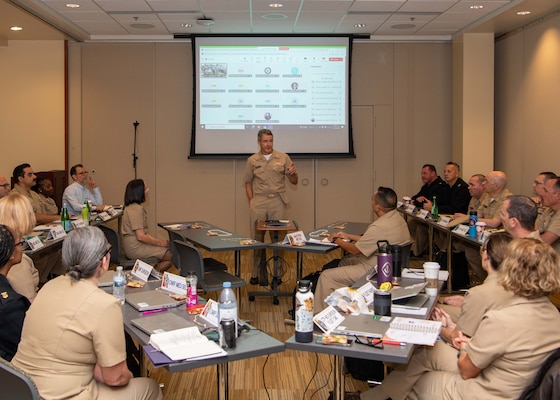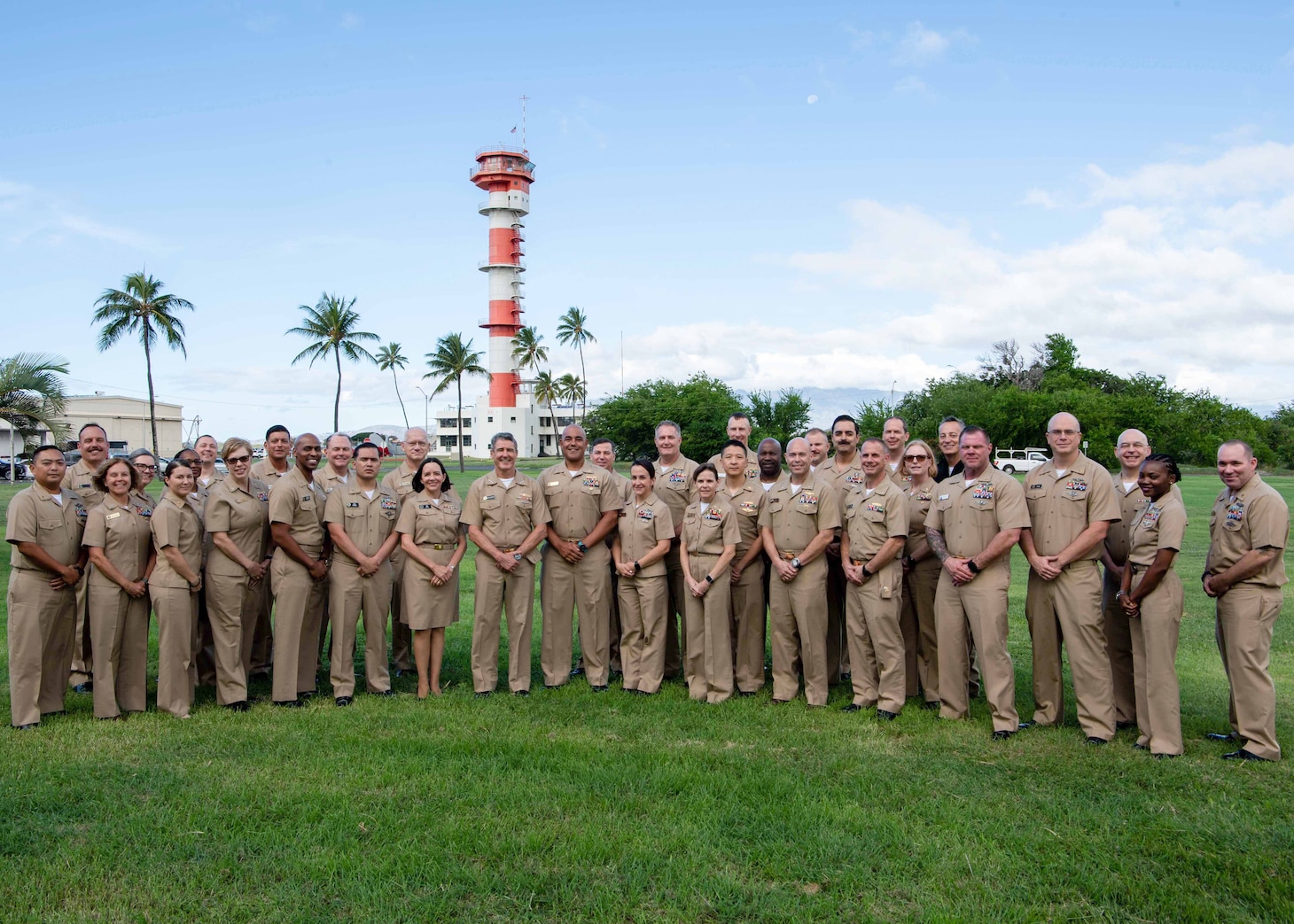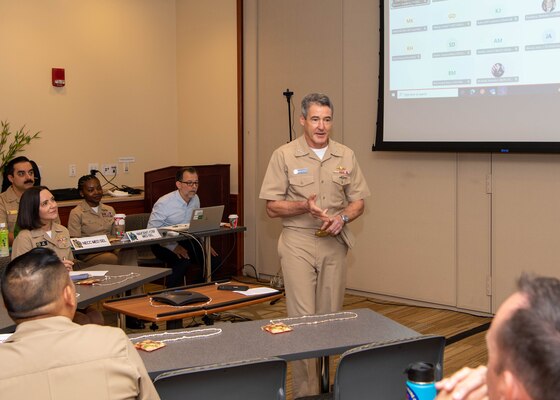

Vice Adm. Blake Converse, deputy commander, U.S. Pacific Fleet, center, poses for a photo with Fleet medical professionals during the Fleet Health Integration Panel (FHIP), Nov. 19, 2024. Hosted by U.S. Pacific Fleet, the FHIP brings together leaders in Navy Medicine to achieve standardized practices and present a unified view of Fleet Health Services. (U.S. Navy Photo by Mass Communication Specialist 2nd Class Christopher Sypert)
FHIP is a coordination forum for fleet surgeons, fleet medical senior enlisted leaders, and leaders from naval medical commands. The FHIP convened to achieve standardized practices and create a unified view of fleet health services.
Vice Adm. Blake Converse, deputy commander, U.S. Pacific Fleet, spoke to attendees during the opening day of the FHIP, emphasizing the importance of the panel’s work and collaboration.
“Over the next three days, we will continue to build on cross functional team efforts, discuss wicked problems with a ‘get real, get better’ mindset, decide what new efforts need more attention now, and those that have been adequately addressed,” said Converse while providing opening remarks for the event.
Participants shared recent work and future opportunities to collaborate on ongoing efforts. Topics discussed this year included force management, training and readiness, requirements management and prioritization, material readiness, and clinical quality and reliability.
“Chartered and fueled by the input of our component, type, and numbered fleet commanders, I am incredibly proud to host FHIP with fleet surgeons and senior enlisted leaders from around the globe here in historic Pearl Harbor,” said Capt. Kimberly Davis, fleet surgeon, U.S. Pacific Fleet. “Over the course of three days, we reviewed updates on cross functional teams, identified gaps, provided input for research focus, and reviewed quality data to ensure combat readiness.”
In addition to the panel discussion, the attendees toured the Defense POW/MIA Accounting Agency (DPAA), learning more about DPAA’s mission to identify and return fallen service members to their families. They also visited the USS Arizona Memorial.
U.S. Pacific Fleet is the world’s largest fleet command with an area of operations that encompasses 100 million square miles, nearly half the Earth’s surface, from Antarctica to the Arctic Circle and from the West Coast of the United States into the Indian Ocean. The U.S. Pacific Fleet consists of approximately 200 ships and submarines, nearly 1,200 aircraft, and more than 130,000 Sailors and civilians.

